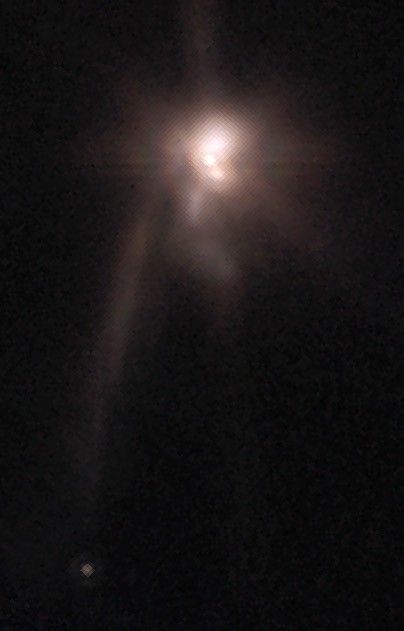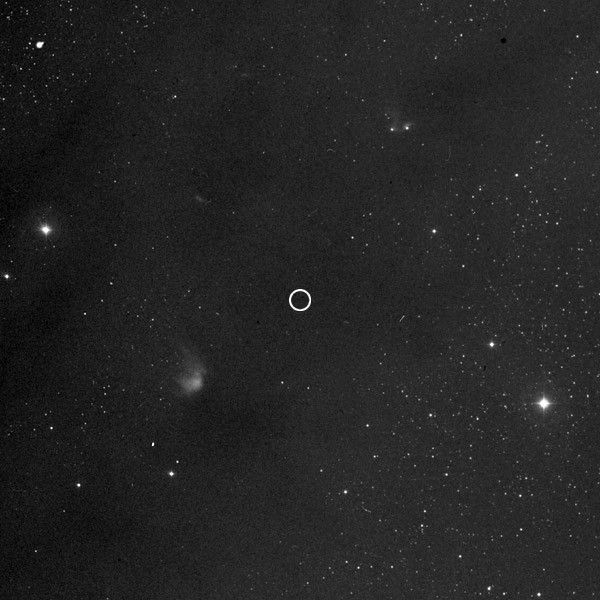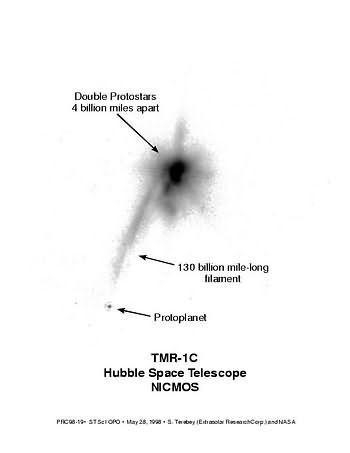1 min read
Simulated image of planetary formation
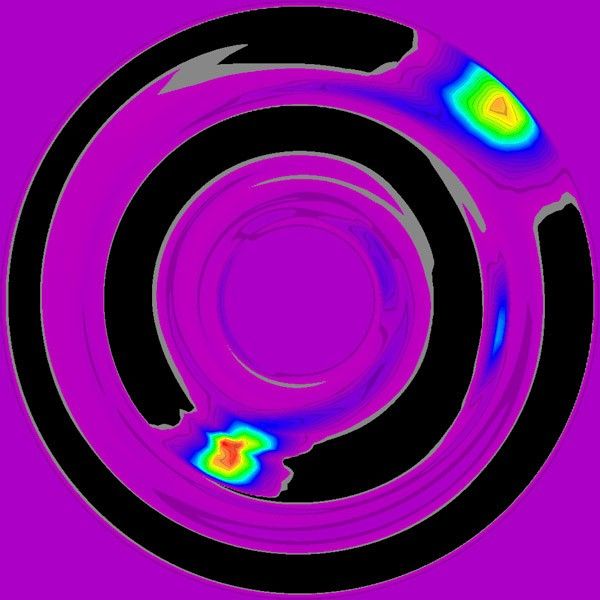
False color image of two gas giant protoplanets that have formed quickly in a disk of gas and dust. Each of the two protoplanets (yellow-red blobs) contains several Jupiter-masses of gas and dust. They orbit at distances of about 5 and 10 times the Earth's distance from the Sun in this theoretical model, at the orbital distances of Jupiter and Saturn in our own solar system. The protoplanets sweep up all the gas close to their orbits, leaving behind empty gaps (black) in the disk (purple). A solar-type star lies unseen at the center of the disk. These protoplanets formed in about 1000 years by the fastest known mechanism, the disk instability mechanism. If this star had a close binary star companion, these protoplanets might well be ejected outward from these otherwise stable orbits.
- Release DateMay 28, 1998
- Science ReleaseHubble Takes First Image of a Possible Planet around Another Star and Finds a Runaway World
- CreditA. Boss (Carnegie Institute of Washington)
Related Images & Videos

Follow-Up Observations Show Potential Planet TMR-1C is Really a Star
This NASA Hubble Telescope near-infrared image of newborn binary stars (image center) reveals a long thin nebula pointing toward a faint companion object (bottom left) which could be the first extrasolar planet to be imaged directly. The brightest objects in the image are the...
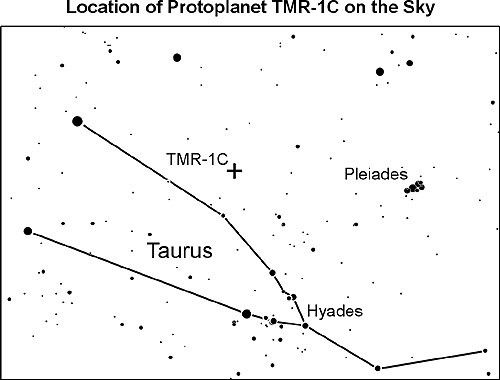
Zoom-In/Visualization of TMR-1C Planet
Zooming into the Taurus star-forming cloud, as seen in visible light, the young binary and planet are revealed as the wavelength shifts to the near infrared. A simulated 3D flyby indicates a possible interpretation of the layout of this region and its possible young planet.
Share
Details
Last Updated
Aug 17, 2025
Contact
Media
Claire Andreoli
NASA’s Goddard Space Flight Center
Greenbelt, Maryland
claire.andreoli@nasa.gov



























